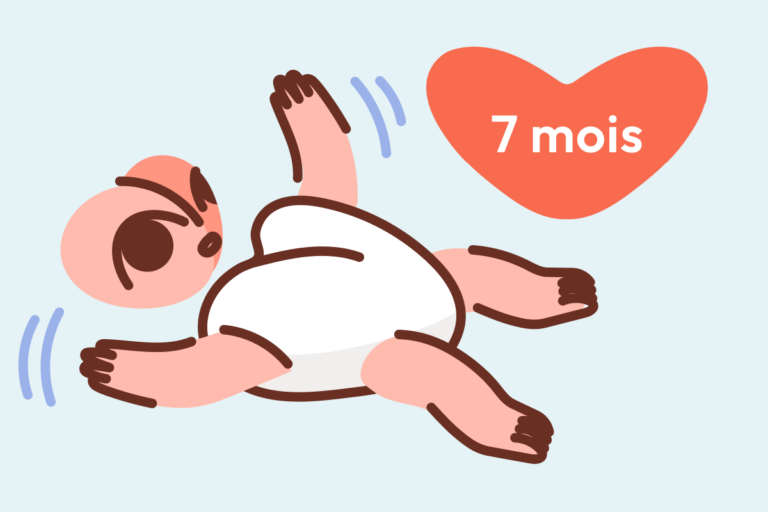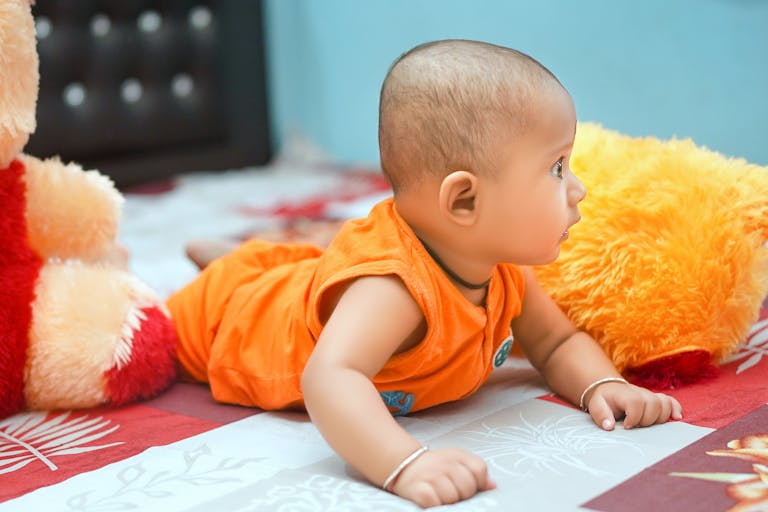Sometimes, amidst the whirlwind of sleepless nights and feeding rhythms, parents discover a surprise—a gentle flattening on their baby’s tiny head, fear creeping in with the question: is something wrong? Positional plagiocephaly—the so-called “flat head syndrome”—causes uncertainty, worry about development, and guilt that tugs at the heart. But what lies behind this change in shape? How much should parents genuinely worry, and what can be done to support a baby’s healthy, rounded skull? Understanding, prevention, and thoughtful action can make an enormous difference. Let’s explore what positional plagiocephaly means, signs that ask for attention, practical strategies, available therapies, and some much-needed reassurance along the way.
What is Positional Plagiocephaly?
Positional plagiocephaly describes a gently sloping or pronounced flattening on one part of a baby’s skull, occurring when soft bones adapt to prolonged pressure—often from lying in a single position. Imagine viewing your baby’s head from above and noticing a subtle parallelogram, sometimes with the ear shifted forward or a cheek more pronounced. This common and overwhelmingly benign remodeling of the skull is different from craniosynostosis, where the bones fuse too early—a rare scenario with entirely different consequences.
The terms connected to skull shape matter. Brachycephaly (a flattened occiput, leading to a wide and short head shape) often joins the conversation. So does dolichocephaly (elongated, narrow head), especially in premature babies. Unlike these positional changes, craniosynostosis requires surgical correction and must be distinguished.
What’s astonishing is the frequency—studies indicate nearly half of infants exhibit some degree of positional plagiocephaly by the end of their first year. It may sound startling, but the rising rates follow safe-sleep recommendations: laying babies on their backs reduces SIDS risk dramatically. The by-product? More flat spots, especially before babies roll and crawl.
Causes, Risk Factors, and the Science of a Soft Skull
Why does this happen? A newborn’s skull offers protection and flexibility—those plates must shift for both birth and a rapidly growing brain. But this very adaptability makes the bones susceptible to external pressure.
- Prolonged supine position: Consistently lying with the head in one orientation flattens that area, especially when varied movement isn’t encouraged.
- Torticollis: Stiff neck muscles (from birth or later) may limit head turning, amplifying asymmetry.
- Prenatal factors: Crowding in the uterus (multiples, limited space) can shape the head even before delivery.
- Prematurity: The earlier the gestation, the softer the skull, and the longer infants may spend lying in incubators or beds.
- Assisted delivery: Forceps or vacuum extraction can sometimes add to the risk.
Subtler risks? Boys show higher incidence than girls, along with firstborns and infants enduring long neonatal stays or certain medical issues requiring them to be less active. The real thread weaving through these categories: immobilization and reduced variability in head positioning.
Recognizing the Signs
Have you noticed a persistent flattened zone, especially at 6–8 weeks when growth surges and movement remains limited? Parents sometimes spot uneven ears, bulging on the opposite side of the forehead, or facial asymmetry (one eye or cheek more prominent). Some infants prefer turning their heads one way, resisting movement in the other direction. These seemingly cosmetic changes can prompt worry, but early recognition supports optimal improvement. Reduced range of neck movement is especially worth discussing with a practitioner, as it may signal torticollis.
Cosmetic and Developmental Outcomes: What’s at Stake?
Does positional plagiocephaly impact more than appearance? For most, the effects remain cosmetic—a difference concealed by hair as a child grows. Rarely, persistent or severe asymmetry may affect self-esteem or lead to teasing. Very few studies point toward associations with motor or language delays, balance, or learning issues, and when present, these often link to unaddressed torticollis or other coexisting factors—not the skull flattening itself. The evidence overwhelmingly suggests that the “flat head syndrome” does not disrupt cognitive or neurological developmental milestones.
Prevention at Home: Practical Strategies for Parents
What can parents actively do, without compromising sleep safety? Subtle changes, woven into daily life, make a real difference. Consider:
- Sleep routines: Always position your baby on the back for sleep (the gold standard for SIDS prevention), but alternate the direction the baby’s head faces. Each sleep session offers a new opportunity—left, right, back again—promoting symmetry.
- Varied crib orientation: Switching which end of the crib the baby lies at or changing the side from which you approach can gently encourage head-turning on both sides.
- Supervised tummy time: While awake and alert, placing your baby on their tummy strengthens the neck and develops motor skills. Even a few minutes, repeated often during the day, fosters head control and distributes pressure.
- Active holding and carrying: Frequent upright holding, using carriers or simply cuddling upright, decreases time spent with the head on a flat surface and encourages looking around.
- Feeding position: Alternate arms or sides with each feeding to prompt movement and even muscle use.
- Engaging with toys: Place colorful objects on both sides of your baby’s play mat, inspiring head-turning and curiosity from all angles.
- Limit prolonged use of bouncers, swings, and car seats: Restrict these devices to when necessary, especially outside car journeys, to avoid constant pressure on the same area.
- Encourage rolling and free play: The more your baby naturally moves, the less risk of a fixed flat spot.
When to Seek Help: Diagnosis and Professional Input
Is your baby’s head still not rounding out? Does difficulty with movement or a fixed preference for one direction persist? Trust your observations and reach out sooner rather than later—especially in the first months, when the bones are softest and most willing to remodel.
A pediatrician will use visual inspection and simple measurements, such as the Cranial Vault Asymmetry Index (CVAI), to assess shape and symmetry. Most infants need no imaging or scans unless an unusual pattern demands investigating for craniosynostosis. Referral to a pediatric physiotherapist or other specialists (such as craniofacial teams) may follow—for those with neck restrictions, more pronounced flattening, or slow progress despite repositioning.
Interventions: What Works—And When
Sometimes, despite every effort, positional plagiocephaly persists. The foundation remains:
- Repositioning: Consistently encourage head turning and diversified positioning, supporting development and flattening reversal.
- Supervised tummy time: This remains the gold standard for gentle pressure redistribution.
- Physical therapy: Especially when torticollis is present, targeted stretching and strengthening restore movement and encourage symmetrical head growth. Manual therapy (delivered by pediatric-trained professionals) may assist in specific cases.
- Helmet therapy (cranial orthosis): For moderate or severe cases unresponsive to several months of repositioning and therapy, a custom-fitted helmet may enter the picture between 4 and 6 months of age. These are worn around 23 hours a day for several months, gently guiding skull growth. Helmets are rarely needed for mild cases, and the decision is always personalized in partnership with an experienced provider.
- Surgery: Nearly never indicated for positional plagiocephaly; reserved only for craniosynostosis (pathological early fusion of skull bones), followed by specialist aftercare.
How Long for Head Shape to Improve?
If parents act early and consistently, visible improvement in positional plagiocephaly often arrives within 3–6 months. Greater gains appear when interventions begin during the “window” of skull malleability—before infants spend long periods sitting unsupported. Achieving a rounded head shape may take until age two, yet most asymmetry hides beneath hair long before then. Delays? Seek help, but remember—slow progress doesn’t mean lack of hope.
Prognosis and Reassurance for Parents
Most families see dramatic shape improvement as babies become mobile, roll, sit, and crawl—shifting pressure points naturally. Persistent—but mild—asymmetry hardly ever brings functional consequence and typically blends invisibly with hair. Addressing underlying neck tightness early only amplifies the final symmetry. Above all, the weight of research reassures: positional plagiocephaly does not impair intellectual growth or brain function. Delays, when present, almost always spring from other, simultaneous medical issues.
Support and Learning: Trustworthy Resources for Your Journey
- Monitor your baby’s progress: subtle changes can signal big improvements or the need for a new strategy.
- Become a student of prevention: the more you know about variable positioning and tummy time, the more empowered you’ll feel.
- Release self-blame: positional plagiocephaly arises frequently even with the most attentive parenting. Early intervention almost always shifts the trajectory.
- Reach out: pediatricians, physiotherapists, and reputable support groups offer experience, clear guidance, and reassurance at every stage. Expert input not only answers questions—it can lighten the emotional load.
Key Takeaways
- Positional plagiocephaly is exceedingly common, largely cosmetic, and responds best to early, consistent techniques like tummy time and repositioning.
- The shape of your baby’s head reflects, above all, time spent in the same position—not any parental failure or neglect.
- The absolute priority for safe sleep: back-lying remains non-negotiable to prevent SIDS and always outweighs any cosmetic concern.
- Severe head shape changes are rare. Most mild cases improve rapidly as infants start to move and play.
- Physical therapy is valuable when neck tension (torticollis) resists home strategies.
- Helmet therapy sits on the spectrum for moderate-to-severe unresponsive cases—always guided by a professional.
- Surgery belongs only to the rare patient with craniosynostosis, not positional plagiocephaly.
- Reach for expert advice any time uncertainty or worry persists. There’s a wealth of knowledge and support on your side.
- For personalized advice and free health questionnaires, try the Heloa app. Guidance and support are just a click away.
Parenting brings enough uncertainty—worries over positional plagiocephaly should not weigh you down. Understanding the science (and practical strategies) places the power squarely in your hands, right where it belongs.
Questions Parents Ask
Can positional plagiocephaly correct itself without intervention?
Many parents wonder if a flat spot can resolve on its own. In numerous cases, as a baby grows, gains head control, and becomes more mobile, the asymmetry may gradually diminish. Natural movements—rolling, sitting, crawling—redistribute pressure and often help round out the head without specific therapy. However, if the flattening is pronounced or persistent, gentle interventions like varied positioning or supervised tummy time may be helpful to optimize improvement. If concerns persist or changes seem slow, consulting a healthcare provider can offer further reassurance and guidance.
Does positional plagiocephaly affect brain development or intellectual abilities?
It is normal to worry about your baby’s future if you notice changes in head shape. Rest assured—there is no evidence that positional plagiocephaly impacts brain development, intelligence, or learning abilities. The condition is essentially cosmetic in almost all cases. Any associated delays are usually linked with other factors, such as limited movement (torticollis), rather than the flat spot itself. Monitoring milestones and staying attentive to any concerns is important, but most children with positional plagiocephaly go on to develop as expected.
Are there any long-term effects of positional plagiocephaly?
For the vast majority of children, any mild residual asymmetry becomes barely noticeable over time and is hidden by hair. Long-term functional problems are extremely rare. On occasion, if the head shape remains visibly uneven into later childhood, it might affect self-confidence; however, most children—and those around them—pay little attention to minor differences. The most important thing is not to blame yourself: flat spots are common, mostly harmless, and manageable with the right strategies.
Further reading:









